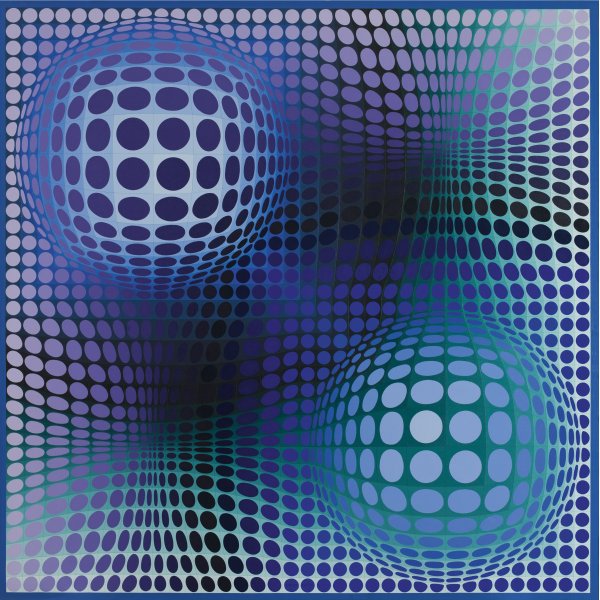Victor Vasarely
Victor Vasarely is held to be a key figure and foremost theoretician of kinetic art and Op Art (optical art).
Born in Hungary, Vasarely trained as an artist in Budapest at the Műhely school founded by Sándor Bortnyik, known as the Hungarian Bauhaus. In 1930 he established himself in Paris, where he initially earned a living as a commercial artist. After a period of what he called ‘false routes’, when he sought his path of expression in various styles, around 1947 he chose geometric abstraction. From then onwards he exhaustively explored perspective, movement and optical effects in works where differently coloured geometric forms interact on the canvas, enlivening the surface. His style attained maturity in the mid-1950s, when he introduced brighter, more vibrant colours that heightened the optical illusion of movement in his works.
Vasarely sought ways of taking art into the street to make aesthetic pleasure part of everyday life. For this purpose he applied his compositional methods to industrial production and town planning.



